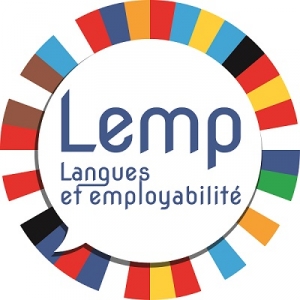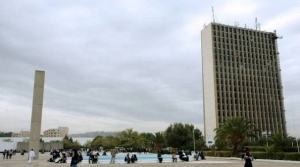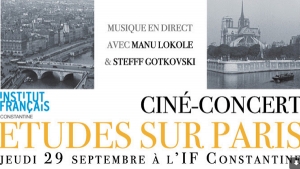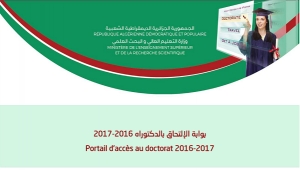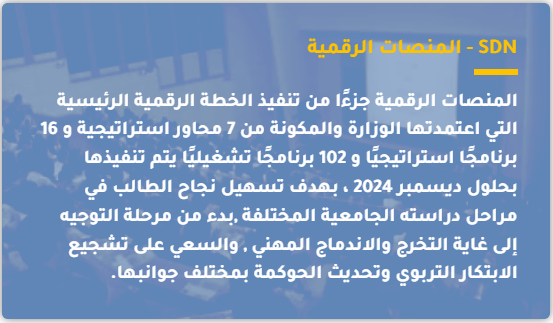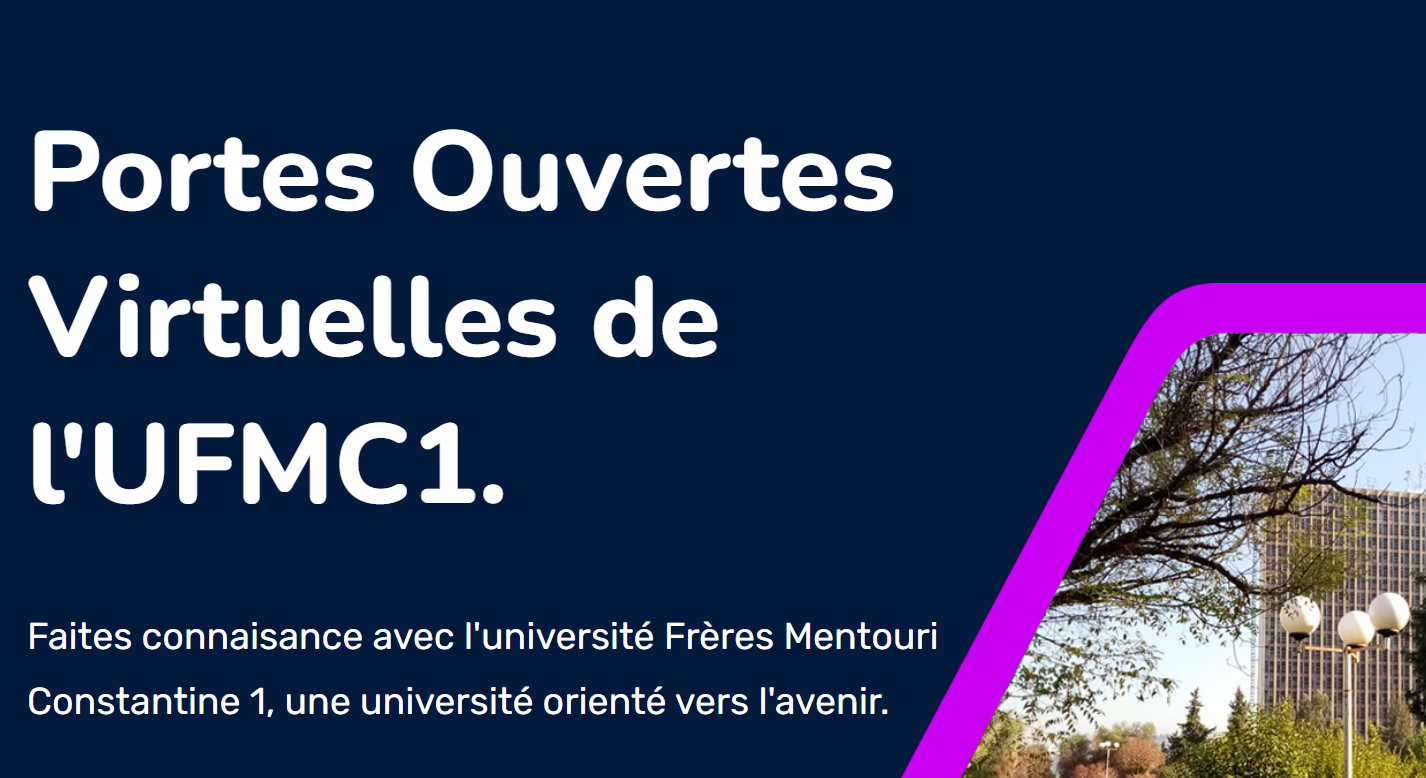Des journées scientifiques en marge du salon International
En marge du salon international de l’olive, huile d’olive, process & dérivés de l’olivier « Med Mag Oliva Algérie 2017 » qui aura lieu du 22 au 25 Février 2017 au Palais des Expositions – Pins Maritimes – Alger, la Sarl SAM GLOBAL en collaboration avec l’Institut National de la Recherche Agronomique d'Algérie <http://www.inraa.dz/> (INRAA) organise des journées scientifiques Sous le thème : « Le secteur Oléicole : Contraintes, enjeux et défis »
HORIZON 2020 en bref
Horizon 2020 - Délivrer l'excellence scientifique de l'Europe
Horizon 2020 est le plus grand programme de recherche et d'innovation jamais réalisé par l'Union européenne (UE). En favorisant la transition des grandes idées, du laboratoire au marché, il conduira à des avancées révolutionnaires, des découvertes et des premières mondiales. Outre l'intérêt que lui portent les investisseurs des secteurs public et privé, il bénéficie d'un financement de près de 80 milliards d'euros(1 ) sur 7 ans (de 2014 à 2020). Horizon 2020 bénéficie du soutien politique des dirigeants des pays de l'UE et des membres du Parlement européen.....
RÈGLEMENT (UE) No 1290/2013 DU PARLEMENT EUROPÉEN ET DU CONSEIL du 11 décembre 2013
The Multiannual Financial Framework 2014-2020: European Council conclusions, 8 February 2013
http://www.horizon2020.gouv.fr
إلى الطلبة المقبولين في الماستر عن بعد تخصص إدارة محلية
mad.adm.locale@umc.edu.dz
Analyse des besoins des employeurs français au regard des compétences en langues vivantes étrangères
Ce rapport d’enquête constitue l’un des principaux résultats du projet LEMP (Langues et employabilité), conduit en 2014-2015 par un consortium (Ministère de l’Éducation nationale, de l’Enseignement supérieur et de la Recherche, CIEP, Céreq-IREDU, Onisep, CCI France) et cofinancé par la Commission européenne.
À travers le recensement et l’analyse des besoins des employeurs dans le domaine des langues, les partenaires du projet ont cherché à recueillir des éléments précis sur l’enjeu des langues au regard du recrutement et de la carrière. Sur la base des résultats obtenus, un rapport d’enquêtes a été rédigé et une campagne de sensibilisation sur l’importance des langues pour l’accès à l’emploi et les opportunités de carrière sera mise en œuvre.
Une entreprise sur deux recherche une compétence en langue vivante étrangère chez les candidats lors du recrutement. À compétences égales, le critère linguistique fait la différence.
La maîtrise de deux langues étrangères est demandée dans quatre annonces sur cinq exigeant une compétence linguistique. L’entretien en langue étrangère est privilégié par les deux tiers des entreprises pour vérifier le niveau du postulant.
Si l’anglais est la première langue la plus utilisée dans les entreprises (76%),
l’allemand (39%), l’espagnol (35%) et l’italien (21%) figurent dans le quatuor de tête. La nécessité d’une plus grande diversité linguistique apparaît puisque 21 langues étrangères sont citées par les entreprises. Dans les offres d’emploi de Pôle emploi et de l’Apec avec exigence linguistique, 22 langues sont mentionnées par les employeurs.
Les langues vivantes étrangères sont essentielles pour l’employabilité
des salariés.
Dans leurs activités professionnelles, toutes les catégories socioprofessionnelles ont besoin de maîtriser des langues à l’oral comme à l’écrit.
Un tiers des entreprises indiquent leurs difficultés à recruter un postulant ayant les compétences linguistiques requises pour le poste visé.
Transferts et Orientations
- Les étudiants n'ayant pas effectué les démarches administratives de retrait de dossier et d'inscription, dans le cadre des transferts peuvent s'adresser aux établissements concernés les mardi 4, mercredi 5 et jeudi 6 octobre 2016.
- Les bacheliers titulaires d'un baccalauréat spécifique ou d'un baccalauréat étranger, ainsi que les bacheliers retardataires ayant déposé une demande d'orientation, sont également invités à finaliser leurs démarches administratives auprès de leur établissement d'accueil pendant cette même période.
Colloque 2016 "Le rôle des universités francophones dans le développement économique" (18-19/10/16 Montréal)
que jamais les universités ont un rôle majeur à jouer dans le développement global. Elles sont appelées à assumer, voire revendiquer, leur mission économique et sociale au-delà de leur rôle académique. En capitalisant et en partageant leur expertise et leurs innovations, les universités francophones, notamment celles qui sont membres de l'Agence universitaire de la Francophonie (AUF), peuvent en faire bénéficier toute la Francophonie économique.
Les universités membres de l'AUF, réparties dans plus de 100 pays, évoluent dans des contextes de développement économique, des cadres politiques et sociaux, et des types de systèmes d'enseignement très divers. Au-delà de ces différences, une problématique commune existe : l'employabilité de leurs diplômés. Ces universités partagent une même préoccupation, qui est de préparer l'insertion professionnelle de leurs étudiants pour qu'ils deviennent des acteurs du développement local, national ou international. Cette préoccupation rend le lien universités – entreprises d'autant plus important, et cela à plusieurs niveaux : la co-construction des curricula, la participation des entreprises à la formation, ou encore la structuration d'une offre de stage.
De même se pose la question de l'insertion des universités dans le tissu économique et leur impact direct et indirect sur le développement territorial. Cela concerne notamment le rôle des universités dans la formation tout au long de la vie, leur action en tant que moteur du développement économique, ou la question des incubateurs.
Un bilan doit être fait sur l'engagement actuel de l'enseignement supérieur dans le développement de la Francophonie économique. Et des recommandations peuvent être faites sur la façon dont les universités pourraient être plus actives encore pour aider au développement économique local, national et international de cette Francophonie économique.
De fait, la question économique constitue désormais une préoccupation majeure de la Francophonie institutionnelle. La «Stratégie économique pour la Francophonie », adoptée lors du XVe Sommet de la Francophonie de Dakar, veut « concilier croissance économique, lutte contre la pauvreté et les inégalités, sauvegarde de l'environnement et préservation du patrimoine culturel ». Elle vise également à « impliquer davantage les acteurs locaux du développement, de la société civile, du secteur privé et de la diaspora » (Stratégie économique pour la Francophonie, 2014, p. 2).
En cartographiant la Francophonie économique comme l'espace économique constitué par l'ensemble des pays membres et observateurs de l'OIF, cet espace, rappelons-le, représentait en 2010 14% de la population mondiale, 14% du revenu national brut (RNB) et 20% des échanges mondiaux de marchandises. À cet égard, la Francophonie économique continue à se renforcer, les pays francophones du Maghreb, d'Asie et d'Afrique ayant aujourd'hui un rythme de croissance supérieur à la moyenne mondiale mais dont les systèmes d'enseignement supérieur font face à des défis d'insertion professionnelle des diplômés toujours fondamentaux.
« La langue, c’est la monnaie des échanges humains. Si nous voulons que la langue française devienne une devise forte, faisons que nos institutions émergent comme des moteurs de développement économique, faisons que la langue soit une monnaie forte de nos échanges universitaires. »
Jean-Paul de Gaudemar
Recteur de l'Agence universitaire de la Francophonie
Le colloque organisé à Montréal les 18 et 19 octobre 2016, en partenariat avec l'Université de Montréal et l'Organisation internationale de la Francophonie (OIF), visera à répondre à ces différentes interrogations en confrontant les points de vue des universitaires et des acteurs du monde économique, autour des thèmes suivants :
-
Le rôle des universités comme moteur du développement économique
-
L'employabilité et l'insertion socioprofessionnelle des diplômés
-
Les partenariats entre les universités et les autres opérateurs du développement économique et social, publics et privés
-
La mise en place d'un réseau d'incubateurs au sein de la Francophonie, comme levier d'insertion économique des étudiants et de création de richesse pour les territoires
La particularité de ce colloque est qu'il regroupera des experts du monde économique et des universitaires venant de tous les continents. Ceci permettra une diversité des analyses qui y seront présentées et discutées.
À l'issue du colloque, des recommandations seront émises à la fois à destination des participants au XVIe Sommet de la Francophonie de Madagascar, qui aura lieu en novembre 2016, et pour les établissements d'enseignement supérieur francophones.
Pour consulter le programme complet du colloque et pour s'inscrire : www.colloqueannuel.auf.org
L'université au secours du blé
La mise en place effective du réseau «filière de blé dur» au niveau de la wilaya de Constantine a fait l'objet d'une journée d'études organisée, hier, conjointement par l'université des frères Mentouri (UMC) et la direction des Services Agricoles de la wilaya (DSA). Et à travers les ateliers qui se sont déroulés sur le campus universitaire, les participants sont sortis avec une feuille de route qu'ils compteront mettre en exécution sur le court, le moyen ou le long terme pour développer cette filière de céréales divers, en premier lieu le blé tendre. Dans ce cadre, nous ont expliqué les responsables concernés, la stratégie à mettre en place tend à booster la production de cette variété de blé en mettant en synergie le savoir-faire, les connaissances scientifiques et la technologie. M. Ghediri Yacine, directeur des Services Agricoles de la wilaya de Constantine, résume la problématique en soulignant qu'à travers ce qui a été déjà réalisé dans ce domaine au niveau du secteur agricole de la wilaya, «il est apparu qu'on peut facilement passer du simple au double dans la production du blé dur pour peu qu'on arrive à réaliser cette synergie, mettre les travaux qui ont été déjà réalisés par les services concernés du secteur de l'agriculture avec les efforts des structures de recherche de l'enseignement supérieur, et nous arriverons aux résultats escomptés». Le professeur Abdelhamid Djekoune, recteur de l'université, abondera dans le même sens en disant que «l'appoint que pourrait apporter dans ce sens l'université se situe au niveau de la recherche et de la formation. Et si l'on comprend un peu les préoccupations du secteur, nous pourrons être en mesure de développer soit du savoir-faire, soit des connaissances nouvelles, soit des technologies ou encore des programmes de recherches. Et à ce titre, l'université peut être mobilisable pour répondre aux doléances et aux préoccupations du secteur stratégique de l'agriculture».
La première communication donnée par un cadre de la direction des Services Agricoles a été axée sur l'état des lieux de la filière blé dur à Constantine, en signalant ses potentialités et les facteurs limitants. Le conférencier, M. Derghal Samir, a considéré à ce sujet que la wilaya a fait du bon chemin dans le domaine de la productivité du blé dur. «Nous sommes passés de 9 quintaux à l'hectare au début de 2001 pour arriver à produire 26 quintaux en 2016, et le travail n'est pas encore terminé. Nos objectifs de production dans le contrat de performance nous appellent à réaliser plus pour arriver à atteindre le niveau de 35 quintaux à l'hectare»
CINÉ-CONCERT : ETUDES SUR PARIS
CINÉ-CONCERT : ETUDES SUR PARIS
> Accéder au site
Agenda
Ciné-concert : Etudes sur Paris - Jeudi 29 septembre 2016 à 18h00 Gratuit sur réservation. Réservations disponibles à l'accueil de l'IF.
Lire l'évènement
Institut Français d'Algérie | Nous contacter Se désabonner Si vous ne parvenez pas à lire correctement cette newsletter, vous pouvez la consulter en ligne
Portail accés au Doctorat
http://doctorat20162017.mesrs.dz/
Une application est disponible à partir de ce lien , visant à donner des informations sur les offres de formation doctorales habilitées au titre de 2016 -2017.





